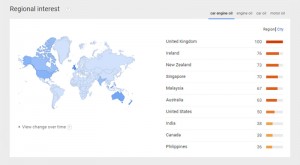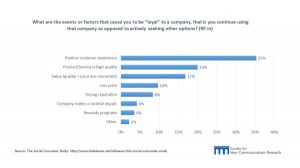Sorting out what’s going on with payments isn’t always easy. There’s a lot of jargon, and when you add acronyms into the mix, it’s not surprising that many people struggle to understand! Wondering what it all means? Here’s a quick list to get you started – think of it as a “cheat sheet” that will help you handle payments better.
An ACQUIRER is also known as an ACQUIRING BANK. The acquirer solicits, underwrites and owns the merchant account that businesses need to accept credit cards. They may provide the technology that lets businesses process transactions, take on the chargeback risks of a business and deposit funds into a business’ bank account.
An API, or APPLICATION PROGRAMMING INTERFACE, is a set of requirements that dictates how one application talks to another to perform a service. For eCommerce businesses, a shopping cart platform will use an API to communicate transactions to a payment processor.
AUTHORIZATION is the process by which a transaction is approved or declined by the issuer. Businesses use this to ensure a customer has sufficient funds available on their credit limit at the time the request is being made. Authorization is used frequently when making hotel or rental car deposits.
The ATS, or AVERAGE TRANSACTION SIZE, is the average dollar amount of each transaction. Setting up a merchant account as a new business? You’ll need to know your ATS so your acquirer can understand your normal processing volumes. Providing an accurate ATS means your merchant account will be up and running with no delays.
CARD BRANDS (you might also see the terms card networks or card associations) refer to credit card and debit card companies. They govern the policies pertaining to their bank cards, monitor processing activity and oversee the clearing and settlement of transactions. In 2019, the biggest card brands were Visa ($ 185.5B in purchase transactions), UnionPay ($ 131.2B) and Mastercard ($ 108.4B).
CARD-NOT-PRESENT transactions usually involve purchases made online or over the phone. For CNP transactions, credit card data is manually entered instead of swiped. Because these transactions involve more risk, CNP transaction rates are often higher.
The CARD VERIFICATION VALUE or CVV is a unique three- or four-digit number. Usually found on the back of a credit or debit card, the CVV is an extra layer of security that can help prevent fraud and unauthorized transactions.
A CHARGEBACK is the process that returns funds to a consumer after they dispute a transaction. The customer requests the refund directly from the bank. Common reasons for chargebacks include fraud, faulty or undelivered goods or services, or technical errors (such as a duplicate charge). Many chargeback requests are fraudulent, especially when customers falsely claim that a package didn’t arrive. For businesses, chargebacks that aren’t successfully disputed may result in a chargeback fee or even account termination.
With CLICK AND COLLECT shopping, customers place orders online and pick up their purchases at the store. Other common terms for this type of shopping are BOPIS (buy online, pick up in store) and CURBSIDE PICKUP.
CREDIT CARD FRAUD is the overall term used to describe theft and fraud relating to credit card use. It can involve theft of the actual card or theft of card information. The card or card information is then used without the cardholder’s knowledge.
ECOMMERCE, or electronic commerce refers, to buying and selling goods and services online, using the internet. eCommerce includes nearly every type of transaction (such as retail, wholesale and subscription) and product (such as physical products, digital products and services).
INTERCHANGE is a fee that the acquiring bank pays to the issuing bank. Each type of credit card has a different interchange rate that’s set by the card brands.
The ISSUER or ISSUING BANK provides the cardholder with their credit and the physical credit card. The issuer is responsible for approving and declining transactions, billing and collecting the funds owed by the customer.
A MERCHANT ACCOUNT is a type of bank account that lets businesses accept credit, debit and mobile payments. It’s established under an agreement between a business owner and an acquirer for the settlement of payment card transactions.
A MERCHANT CATEGORY CODE, or MCC, is a four-digit code assigned to each business by card brands to identify them. For example, the MCC code for all bookstores is 5942. Because each industry has different levels of fraud risk, the wrong MCC code can affect the processing rates paid by a business.
A MERCHANT IDENTIFICATION NUMBER, or MID, is a unique number issued by the acquiring bank to identify a business.
NFC or NEAR FIELD COMMUNICATION is the technology that enables us to tap to pay and makes mobile payments like Apple Pay and Google Pay possible. Radio waves carry information between the payment card or smart phone and the payment reader, as long as they’re not more than a couple of inches apart.
PAYMENT PROCESSORS are organizations that partner with acquirers to open merchant accounts, handle support and manage payment processing. Payment processors also build technology on behalf of acquirers.
PCI COMPLIANCE is a set of security and compliance standards that lets businesses keep customer payment card information secure.
The POINT OF SALE, or POS, is often called the checkout. It’s where transactions happen and payment is accepted. Today’s POS terminal systems offer many useful reporting functions and business tools, and many brick-and-mortar retailers now use these systems instead of cash registers.
RECURRING PAYMENTS are automatic and periodic payments made under a pre-authorized agreement for an ongoing product or service.
Every business should know and understand these key merchant services terms.
Business & Finance Articles on Business 2 Community
(54)
Report Post




